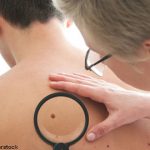However, the dermatologists interviewed for this article would prefer to see rheumatologists stick to the lower potency therapies, due to the possible side effects with the higher potencies. “There are times to use the high potency steroids, but that should be done under the close watch of a dermatologist,” says dermatologist Delphine Lee, MD, PhD, director of translational immunology, Dirks/Dougherty Laboratory for Cancer Research, the John Wayne Cancer Institute at Providence Saint John’s Health Center, Santa Monica, Calif.
“Use the stronger steroids for a shorter period of time, or the less strong ones for longer,” recommends rheumatologist Nathan Wei, MD, The Arthritis Treatment Center, Frederick, Md.
Dr. Wei’s approach will depend on the extent of skin disease. If it’s a psoriatic arthritis patient with significant disease, he will always ask an area dermatologist to help recommend treatment. He also sticks to short durations for any use of a topical steroid on the face.
Rheumatologists should be sure to give a sufficient amount of topical steroid when writing prescriptions, Dr. Merola advised. “I remind people that 20 to 30 grams is around the size of a travel-sized toothpaste. Use that as a reference, and then you can scale up if needed,” he says.
Physicians also have to consider the body surface area of involvement, frequency of use and duration of use in prescribing an adequate amount of steroid. “A safe mantra to teach the patient is to use the topical steroid for two weeks and then take one week off,” Dr. Merola says. “This reduces the risk of skin atrophy.”
Dr. Frankel also prefers a maximum use of two weeks on the body, but a maximum of one week if the use is on the face.
Avoid the use of fluorinated steroids on the face, cautions Dr. Ross. Topicals with fluorination can cause rashes on the face because they are too strong.
Although topical steroids have fewer side effects than their systemic counterparts, there are still a number of cautions to consider, especially as the potency increases. Some side effects include acne, thinning of the skin and redness, Dr. Lee says.
Other risks include cataracts, the formation of new blood vessels, tachyphylaxis (which is a decrease in response to topical corticosteroids when they are used constantly), Cushing’s syndrome, stretch marks, steroid rosacea, warts, viral infections and increased susceptibility to skin infections, Dr. Frankel says. And if a topical steroid is unintentionally used in an area with skin cancer, that could delay diagnosis, Dr. Frankel adds.


